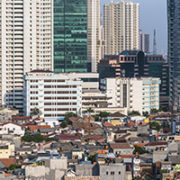Economics, Industry and trade, Information and Communications Technology
 Economics, Governance and public sector management, Regional cooperation and integration
Economics, Governance and public sector management, Regional cooperation and integration
 Economics, Finance sector development, Information and Communications Technology
Economics, Finance sector development, Information and Communications Technology
 Economics, Regional cooperation and integration
Economics, Regional cooperation and integration
 Economics, Transport
Economics, Transport
 Economics, Poverty
Economics, Poverty
 Transport
Transport
 Industry and trade
Industry and trade
 Industry and trade
Industry and trade
 Economics, Industry and trade, Information and Communications Technology
Economics, Industry and trade, Information and Communications Technology

The spillover effects of digital platforms

“Over-the-top” (OTT) service providers are referred to as so because they allegedly ride exclusively on top of the infrastructure laid by telecommunications service providers. Hidden behind the term OTT is the notion that such providers do not invest in the network infrastructure yet provide the same services as telecommunications service providers. While this may seem intuitive to some through a cursory examination of the marketplace, what such assertions fail to consider are the numerous “edge-of-the-network” investments by OTT service providers as well as the massive efficiency, flexibility, and propensity-to-scale inherent in OTT business models.
Tackling the challenge of growing inequality in Asia

Income inequality is one of the most profound social, economic, and political challenges of our time. A survey conducted by Pew Research Center (2014) found that more than 60% of worldwide respondents regard the gap between the rich and the poor as a major concern. Piketty (2014) draws the unequivocal conclusion that growing inequality between the rich and the poor—between the owners of capital and the rest of society—is the normal state of affairs under capitalism, and that periods of decreasing inequality, such as during a post-war boom, are the exception, not the rule.
Fintech adaptation can bridge Asia’s SME financing divide

Small and medium-sized enterprises (SMEs) play a vital role as a driving force in economies around the world, especially in Asia. SMEs in the Association of Southeast Asian Nations (ASEAN) region are estimated to comprise more than 98% of the total number of enterprises, and they contribute to around 40% of gross domestic product.
Greater partnerships for the effective management of labor migration in Asia

The pace and size of labor migration have been on the rise in past decades, largely due to the different stages of economic development across Asia. Labor migration flows from Asia peaked in 2015 and dropped in the following 2 years, falling to 5.2 million in 2017, the lowest level since 2011.
A step forward in attracting private sector financing for infrastructure projects

Such infrastructure projects would not be effective without proper operation and maintenance, and economic activities would be unsustainable without efficient infrastructure. The transport sector is an important component of any economy, and it is a crucial input for development. This is especially so in a globalized economy, where economic opportunities are increasingly related to the efficient mobility of people, goods, and information.
The impact of trade opening on developing Asia: Evidence and policy implications

Even though in aggregate, trade leads to economic gains, it almost always creates winners and losers. To design appropriate social protection policies, it is important to know the identities of these winners and losers. These policies need to be in place for equity reasons as well as to build and sustain support for free trade.
High-Speed Rail: Necessary but not sufficient for socioeconomic development

Since its inception in Japan in 1964, high-speed rail (HSR), and its impact on the economy, has received attention from policymakers worldwide. Early HSR development was more of a race to go faster, and the early success led policymakers around the world to believe in the power of HSR for catalyzing growth.
Services policies and manufacturing exports

Services and manufacturing are closely intertwined. Manufacturers use services as inputs into their production process. It is difficult to imagine a modern global value chain working without efficient transport services, financial services, logistics, and business services.
How services helped power “Factory Asia”

Measuring productivity in the services sector is fraught with difficulties. One key aspect of the “premature deindustrialization” argument is the hypothesis that services are low productivity relative to manufacturing, and that prospects for rapid and sustained productivity growth, which are the primary source of gains in per capita income, are greater in manufacturing than in services.
What can services trade policy do for sustainable development?

The 2030 Agenda for Sustainable Development has many services dimensions; improved access to and provision of services are necessary for attaining many of the Sustainable Development Goals. Because of their effects on competition in services markets and the ability of foreign providers to supply services to consumers and firms in developing countries, services trade policies should be considered in the arsenal of policy instruments that can be used in efforts to realize sustainable development objectives.


Search
Subscribe / Connect to Asia Pathways
Subjects
- Accelerating Progress in Gender Equality
- Addressing Remaining Poverty and Reducing Inequality
- Agriculture and natural resources
- Capacity development
- Climate change
- Economics
- Education
- Energy
- Environment
- Finance and Innovation
- Finance sector development
- Gender
- Globalization and Economic Stability
- Governance and public sector management
- Health
- Human Capital Development for Inclusive Growth and Shared Prosperity
- Industry and trade
- Information and Communications Technology
- Infrastructure
- Making Cities More Livable
- Miscellaneous
- Population
- Poverty
- Private sector development
- Regional cooperation and integration
- Sanitation
- Social development and protection
- Strengthening Governance and Institutional Capacity
- Subjects
- Transport
- Uncategorized
- Urban development
- Video Blog
- Water
Recent Posts
- The Promise and Perils of Mother Tongue-Based Education
- From Crisis to Resilience: The Evolution of the Banking Sector in Asia and the Pacific
- Tariffs on the Table: What Could Be Asia’s Next Move?
- Investing in Childcare a Win for Women and the Economy
- Flush and Flourish: Upgraded Toilets Can Transform Lives in Rural Asia




Recent Comments